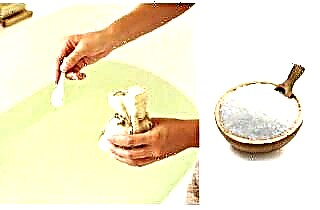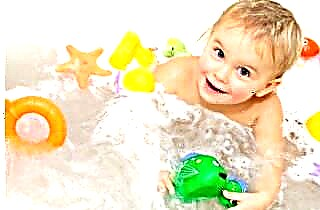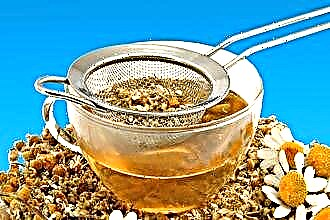Water procedures are necessary for children from the very first days of life. They help to relax, cleanse the skin of sweat, dust and other impurities, improve mood and help strengthen the immune system. However, what is good for a healthy toddler can be dangerous for the sick. When babies are plagued by colds and viral respiratory diseases, parents wonder whether it is possible to bathe a child when they cough? There is no definite answer to this question, since it depends on many factors. Let's try to figure it out.
How to make a decision
 It is up to the parents and the pediatrician to bathe or not bathe the baby. The choice depends on many factors. It should be borne in mind that a cough can be triggered not only by colds, but also by disorders such as:
It is up to the parents and the pediatrician to bathe or not bathe the baby. The choice depends on many factors. It should be borne in mind that a cough can be triggered not only by colds, but also by disorders such as:
- mental disorder;
- impaired blood circulation;
- disruption of the digestive tract;
- allergy;
- teething;
- insufficient humidity in the room;
- high air temperature.
If these diseases occur in the crumbs without any complications, then the water will benefit him. It is necessary to make a decision about refusing to bathe only after you have decided on the nature of the cough, make sure that there are or are not additional symptoms, and study the baby's condition.
Consider the age and morale of the child. If he is not depressed, does not feel any discomfort, then bathing will be his pleasure.
We carry out procedures correctly for various diseases
In order not to harm the child and not complicate the situation, you need to know how to properly bathe him for various respiratory diseases. In some cases, baths are required during treatment, since inhalation of steam greatly relieves the patient's condition. But sometimes it is better to refuse direct contact with water and limit yourself to rubdowns. Let's consider how to proceed in specific cases.
 With viral respiratory infections, bathing does not need to be canceled, on the contrary, they will be useful for the little patient. However, it should be borne in mind that the water temperature should be slightly higher than usual so that the body does not overcool. You can add a decoction of pine needles or eucalyptus, sea salt to the bath. These medicines will create an inhalation effect, help to remove phlegm and make breathing easier. Keep the bathroom doors tightly closed, prevent drafts, immediately after bathing, dry the child with a towel and wrap it in a blanket, after 10 minutes put on warm pajamas.
With viral respiratory infections, bathing does not need to be canceled, on the contrary, they will be useful for the little patient. However, it should be borne in mind that the water temperature should be slightly higher than usual so that the body does not overcool. You can add a decoction of pine needles or eucalyptus, sea salt to the bath. These medicines will create an inhalation effect, help to remove phlegm and make breathing easier. Keep the bathroom doors tightly closed, prevent drafts, immediately after bathing, dry the child with a towel and wrap it in a blanket, after 10 minutes put on warm pajamas.- Gastroesophageal reflux. The disease occurs due to improper functioning of the gastrointestinal tract. With it, food is thrown from the esophagus back into the pharynx, and then into the respiratory tract, which causes the cough reflex. You need to swim with such a violation, as usual. To alleviate the condition of the child, relaxing decoctions (lemon balm, chamomile, calendula, etc.) can be added to the bathroom.
- Laryngitis. This disorder is accompanied by a particularly severe tearing cough and wheezing. At the very peak of the disease, water procedures are contraindicated; it is better to replace them with wiping with a damp warm towel.
 Tracheitis and bronchitis are ailments in which a child coughs without sputum production, long and painful. With them, it is recommended to take a shower for no more than 2-3 minutes. After the procedure, the little patient is wiped dry with a towel and sent under a blanket.
Tracheitis and bronchitis are ailments in which a child coughs without sputum production, long and painful. With them, it is recommended to take a shower for no more than 2-3 minutes. After the procedure, the little patient is wiped dry with a towel and sent under a blanket.- Moist cough. It is characteristic of some inflammatory diseases and the stage of recovery of viral or bacterial ailments. With it, you not only can, but also need to swim in a hot bath. Decoctions of herbs with anti-inflammatory properties such as plantain, sage, etc. are added to it.
- Pneumonia. Severe respiratory tract disease, accompanied by a mass of complications. For recovery, the child needs complete rest, so you cannot bathe him for 2-3 weeks. Use a warm, damp towel during this time. When the disease begins to recede, you can slowly return to water treatments.
General rules for conducting procedures
 If a child is coughing, but water procedures are not contraindicated for him, they must be carried out correctly. Pediatricians recommend taking a bath or shower every day for hygienic reasons. It has been scientifically proven that the condition of children who have not washed for several days during an illness worsens sharply. This is due to profuse sweating during the fight against the disease. In order not to harm your baby, follow these recommendations:
If a child is coughing, but water procedures are not contraindicated for him, they must be carried out correctly. Pediatricians recommend taking a bath or shower every day for hygienic reasons. It has been scientifically proven that the condition of children who have not washed for several days during an illness worsens sharply. This is due to profuse sweating during the fight against the disease. In order not to harm your baby, follow these recommendations:
- Carry out water procedures for a short time, 2-3 minutes, when the baby is on the mend, increase the time by 2 minutes every day to return to the usual routine.
- Do not add herbal infusions of alcohol or essential oils to the water, they can irritate and even burn the delicate baby skin.
- Observe the temperature regime of the water, it is impossible for it to be higher or lower than 37ᵒC, it is best to check the indicators with a thermometer, but if it is not there, dip your elbow into the bathroom, it is most susceptible to changes.
 Close the bathroom door tightly, it should be warm enough, from +24 to + 26ᵒ С.
Close the bathroom door tightly, it should be warm enough, from +24 to + 26ᵒ С.- After bathing, be sure to wipe the baby dry and wrap it in a warm blanket or bath towel and let it sit for 10 minutes.
- Dress your baby in warm clothes, but without fanaticism, he should not sweat after water procedures, if this happens, immediately change into dry clothes.
- Avoid drafts and cold in the room where the child will be after bathing. If the air temperature is below + 20ᵒC, it is better not to carry out water procedures.
- Bathe your baby with toys, tell him entertaining stories, rhymes, fairy tales, turn hygiene procedures into an exciting adventure.
Features of the treatment of babies
Bathing a toddler for 2-3 years is not a problem, but a sick baby requires special attention and adherence to the technology of bath procedures. Thermoregulation in the crumbs is not yet clearly debugged, they quickly supercool and overheat. Our task is to eliminate a sharp temperature drop... To do this, we perform the following actions:
 before bathing, heat the air in the room where the procedure will be carried out to at least + 20ᵒC;
before bathing, heat the air in the room where the procedure will be carried out to at least + 20ᵒC;- pour warm water into the bath, observe the usual temperature regime;
- wrap the baby in a diaper or towel and immerse it in water;
- alternately release and wash, and then again wrap the head, shoulders, chest, stomach, back, arms and legs;
- take the baby out of the bath, take a dry towel and wipe it thoroughly;
- wrap in a clean warm diaper or dress in linen.
Contraindications to water treatments
 For illnesses accompanied by a cough, bathing may be completely contraindicated. Also, you do not need to use a shower, this can only aggravate the child's condition.... You need to focus on the baby himself, if he does not want to carry out water procedures, is capricious and cries, then it is better to postpone them for several days. Hygienic washing is also prohibited in such cases:
For illnesses accompanied by a cough, bathing may be completely contraindicated. Also, you do not need to use a shower, this can only aggravate the child's condition.... You need to focus on the baby himself, if he does not want to carry out water procedures, is capricious and cries, then it is better to postpone them for several days. Hygienic washing is also prohibited in such cases:
- increased body temperature more than 37ᵒ С;
- body aches;
- chills;
- general lethargy;
- headache.
Such conditions are observed at the very beginning of the disease, when infections are actively developing and the body is trying to fight them.
In the early days, and in some cases even weeks, babies are shown bed rest and a complete refusal to swim. The body can be wiped off with a damp towel or napkin. This is done in a warm room, after the procedure, the child is changed into clean dry linen and covered with a blanket.
So, you need to bathe children every day, it is good for their physical and psychological health. If the baby is coughing, then the procedure should be approached very carefully, weighing all the pros and cons.If you have any medical conditions, it is better to consult a doctor about the hygiene of the child.

 With viral respiratory infections, bathing does not need to be canceled, on the contrary, they will be useful for the little patient. However, it should be borne in mind that the water temperature should be slightly higher than usual so that the body does not overcool. You can add a decoction of pine needles or eucalyptus, sea salt to the bath. These medicines will create an inhalation effect, help to remove phlegm and make breathing easier. Keep the bathroom doors tightly closed, prevent drafts, immediately after bathing, dry the child with a towel and wrap it in a blanket, after 10 minutes put on warm pajamas.
With viral respiratory infections, bathing does not need to be canceled, on the contrary, they will be useful for the little patient. However, it should be borne in mind that the water temperature should be slightly higher than usual so that the body does not overcool. You can add a decoction of pine needles or eucalyptus, sea salt to the bath. These medicines will create an inhalation effect, help to remove phlegm and make breathing easier. Keep the bathroom doors tightly closed, prevent drafts, immediately after bathing, dry the child with a towel and wrap it in a blanket, after 10 minutes put on warm pajamas. Tracheitis and bronchitis are ailments in which a child coughs without sputum production, long and painful. With them, it is recommended to take a shower for no more than 2-3 minutes. After the procedure, the little patient is wiped dry with a towel and sent under a blanket.
Tracheitis and bronchitis are ailments in which a child coughs without sputum production, long and painful. With them, it is recommended to take a shower for no more than 2-3 minutes. After the procedure, the little patient is wiped dry with a towel and sent under a blanket. Close the bathroom door tightly, it should be warm enough, from +24 to + 26ᵒ С.
Close the bathroom door tightly, it should be warm enough, from +24 to + 26ᵒ С. before bathing, heat the air in the room where the procedure will be carried out to at least + 20ᵒC;
before bathing, heat the air in the room where the procedure will be carried out to at least + 20ᵒC;

